Start with the basics! Build your maths skills one at a time — or should we say, add them one at a time?

Author
Taylor Hartley

Expert Reviewer
Jill Padfield
Published: January 23, 2024


Start with the basics! Build your maths skills one at a time — or should we say, add them one at a time?

Author
Taylor Hartley

Expert Reviewer
Jill Padfield
Published: January 23, 2024




Start with the basics! Build your maths skills one at a time — or should we say, add them one at a time?

Author
Taylor Hartley

Expert Reviewer
Jill Padfield
Published: January 23, 2024


Key takeaways
Finding the sum, or adding, is the most important yet basic concept in maths. Without this skill, it will be almost impossible to move on to more complicated maths concepts like subtracting, multiplying, and dividing. But, what is finding the sum?
It’s very simple — when we add two or more numbers together, the result is called the sum. Let’s dig in to learn more about addends and the different ways you may be asked to find the sum in the classroom and beyond.
Just beginning your maths journey? Learning how to find the sum is a great place to start! One thing to keep in mind when it comes to maths is that there’s a term or word to describe everything — a lot of it is memorisation. For your first term, it’s important to know about addends.
Addends are a set of numbers that are being added together to find the sum. In other words, when we add two or more numbers, or addends, together, the answer we get is defined as the sum. Easy enough? Let’s take a look at a simple example.
Unlock unlimited maths questions
Put your learning into practice with fun exercises + games that are proven to boost ability!
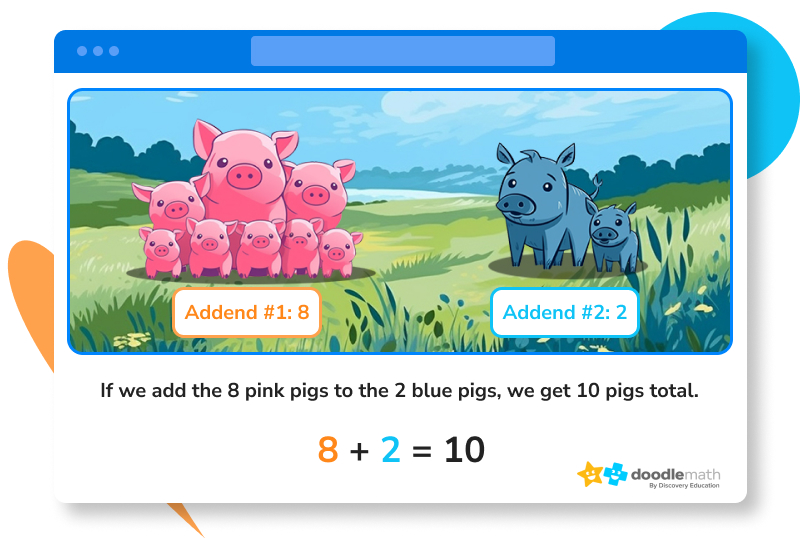
Simply put, the sum is a way of putting all of the things together. For those that might find maths to be a bit tricky, let’s take it out of context for a second. Have you ever heard someone tell a story or explain a concept, then wrapped up by saying something like “To sum it up…” or “In summary…”? Both of these phrases come from the term “sum” and are used as ways to help recap or bring together all of the pieces of the puzzle.
Okay, back to maths! Again, the sum helps us bring two or more numbers or addends together to make a total. Take a look at some other ways that you might be asked to find the sum:
You may see problems ask you for the sum like this:
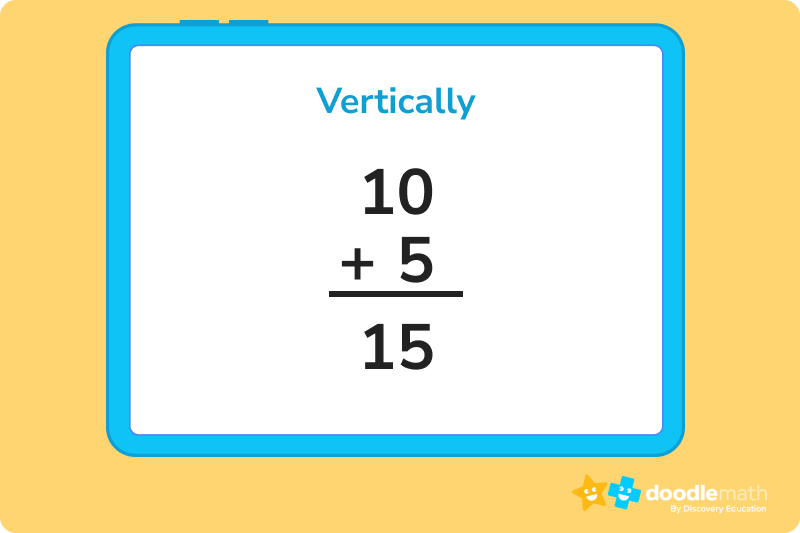

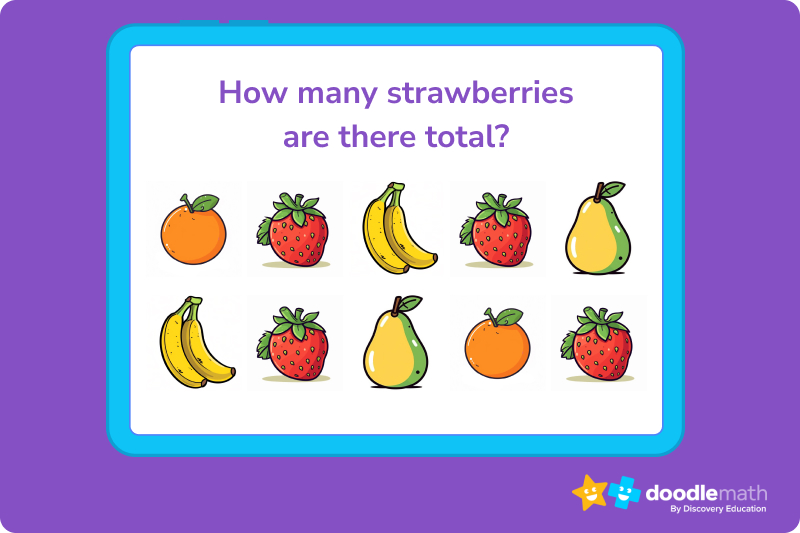
Want to learn more about addition? DoodleMaths is an award-wining maths app that’s proven to double a child’s rate of progression with just 10 minutes of use a day!
Filled with fun questions covering the whole curriculum, it creates each child a unique experience tailored to their needs, boosting their confidence in maths. Try it free today.


Feel like using your fingers to find the sum? That’s totally fine! But, sometimes you may be asked to find the sum using a visual aid like a number line. To keep things simple, let’s imagine a number line from 0 to 10. Next, you’re asked to find the sum of 2 + 6.
First, find the 2 on the number line and mark it with your pencil. Then, since you need to add 6, you will hop 6 numbers down the line. An easy way to do this is to create little loops from one line to the next. Did you find the answer yet? Once you get six numbers down from 2, you end up on the number 8. Your final sum of 2 + 6 is 8!
Let’s try another example.
Let’s say we want to add 6 to 2. We will use our number line and start at the number 2.
Then, we hop 6 spaces, and we land on 8.
2 + 6 = 8
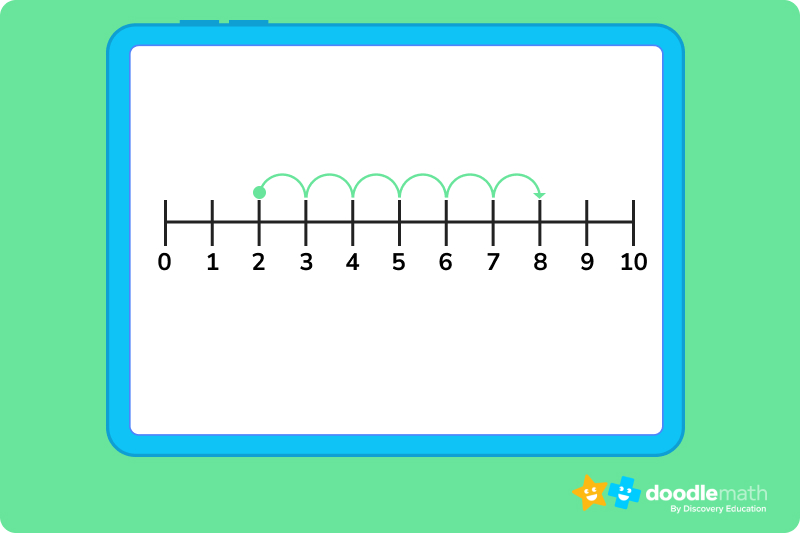
Now you try!
What is 3+4?
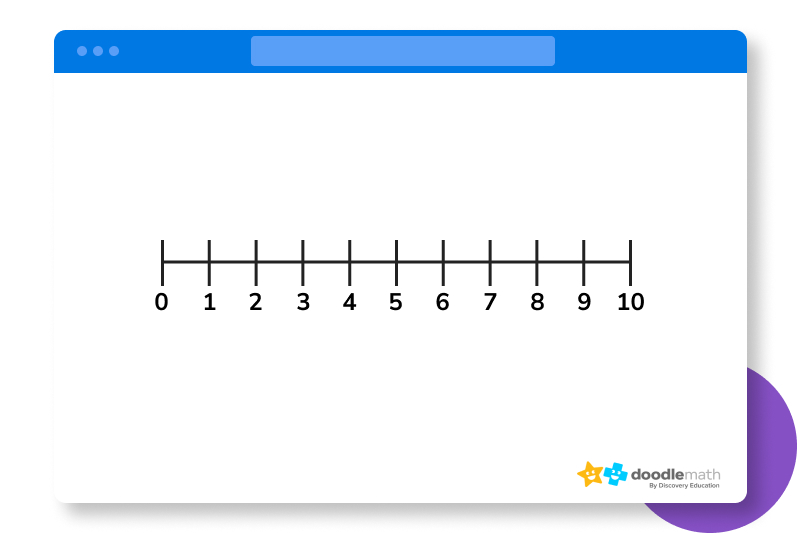
The best way to learn how to find the sum is to practise! Below, let’s take a look at a few practice problems — each are asking you to find the sum, but they are worded differently. This way, you can get the hang of it while learning how you might be asked to find the sum in class or in more complex word problems!
Ready to give it a go?
Now that we know how to find the sum, all of the ways that you may be asked to find the sum, and we’ve done several examples together using number lines, we’re ready to do a few more practice problems to put our new skills to the test! Work through the following problems on your own. Feel free to look back at the practice problems above if you get stuck, or if you need a quick reminder on how to find the sum.
And remember, don’t get discouraged if you run into a roadblock! Practice is the best way to learn something new.
Click to reveal the answer.
The answer is 9
The answer is 18
The answer is 6
The answer is 9.
How did we get here?
The answer is 17.
How did we get here?
The answer is 18.
How did we get here?
C is incorrect.
How did we get here?
The answer is 6
How did we get here?
Sign up for the DoodleMaths app today!
Turn maths into an adventure when you sign up for DoodleMaths.
“Find the sum” is a mathematical phrase that refers to the process of adding numbers together to get a total. It involves combining or adding the given quantities to determine their collective value.
To find the sum of two or more numbers, you add them together. Start by writing down or mentally holding the numbers, then add each digit in the corresponding place value. Carry over any values that exceed the base value (such as carrying over from ones to tens). The result is the total sum of the given numbers.
Yes, the order in which you add the numbers does not affect the final sum. That’s because addition follows the commutative property, which means you can rearrange the numbers being added without changing the result. For example, when finding the sum of 3 + 4 + 5, you can add 3 + 5 first and then add 4, or vice versa, and you will still get the same sum.
Finding the sum is a fundamental skill used in various real-life situations. For example, it is used in calculating total prices when shopping, adding up scores in games or sports, determining the total distance traveled on a trip with multiple segments, or calculating the total number of items in a collection or group.


Parents, sign up for a DoodleMaths subscription and see your child become a maths wizard!

Lesson credits

Taylor Hartley
Taylor Hartley is an author and an English teacher. When she's not writing, you can find her on the rowing machine or lost in a good novel.

Jill Padfield
Jill Padfield has 7 years of experience teaching mathematics. She is currently working as a Business Analyst, working to improve services for Veterans while earning a masters degree in business administration.

Taylor Hartley
Taylor Hartley is an author and an English teacher. When she's not writing, you can find her on the rowing machine or lost in a good novel.

Jill Padfield
Jill Padfield has 7 years of experience teaching mathematics. She is currently working as a Business Analyst, working to improve services for Veterans while earning a masters degree in business administration.
Book a chat with our team
If you’d like to use Doodle’s browser version, please visit this page on a desktop.
To log in to Doodle on this device, you can do so through our apps. You can find out how to download them here: